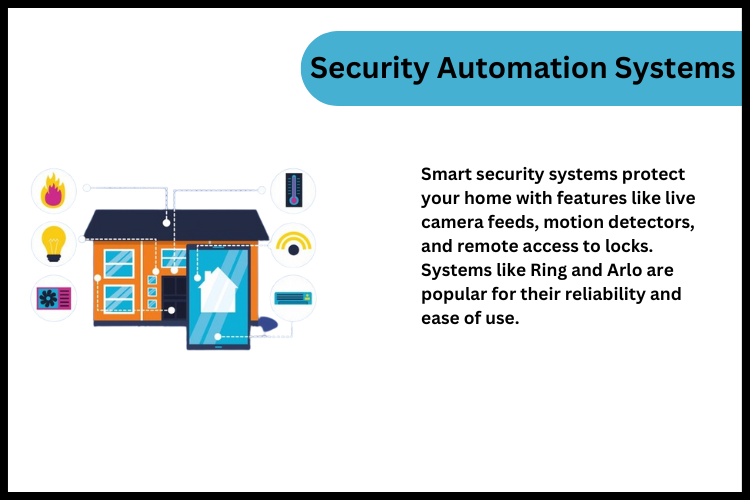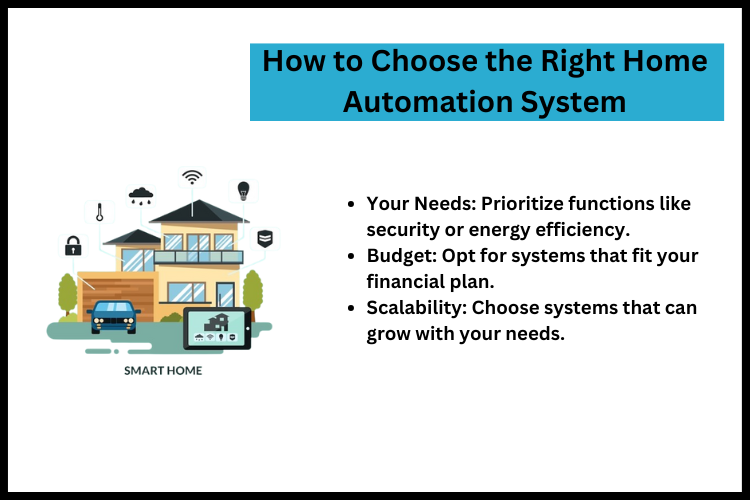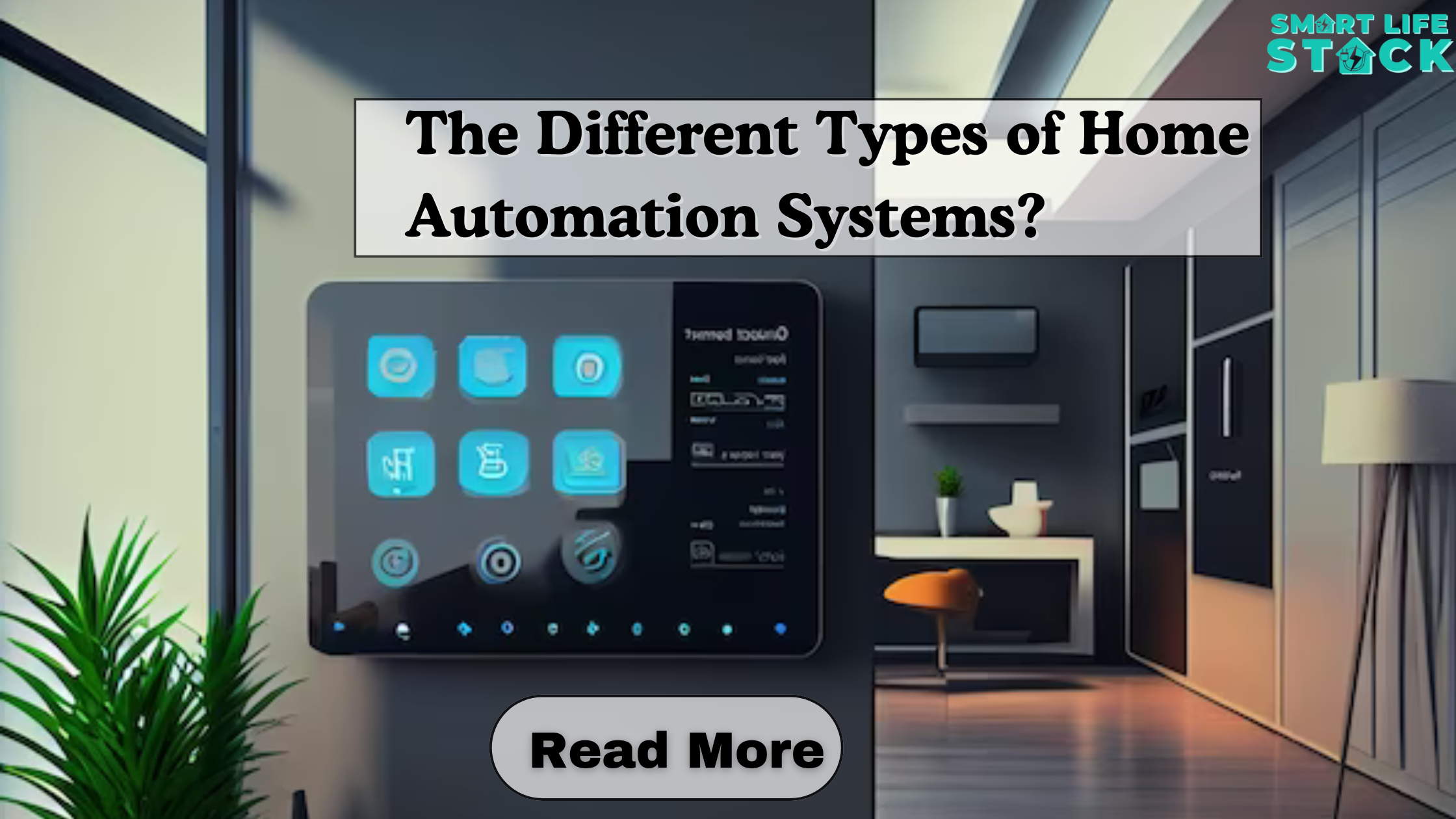Introduction
Imagine a home that listens to you, adjusts to your needs, and saves you time and energy—this is the magic of a home automation system. In today’s tech-driven world, these systems have become essential for modern living. They offer convenience, security, and efficiency, making your home smarter and your life easier. Let’s dive into the different types of home automation systems and explore how they can transform your living space with Smartlifestack.
What is a Home Automation System?
A home automation system refers to a network of devices and technologies that allow you to control and automate various functions of your home. The factors that are considered include lighting, temperature, security, and even appliances. With a central control system or app, you can manage your home seamlessly.
Basic Components:
- Sensors (e.g., motion, temperature)
- Controllers (e.g., remotes, apps)
- Actuators (e.g., smart bulbs, locks)
Benefits of a Home Automation System
The benefits of investing in a home automation system. Here are some compelling reasons:
- Convenience: Control everything with just a tap or a voice command.
- Energy Efficiency: Save energy by automating lights and appliances.
- Security: Monitor and secure your home remotely with smart security systems.
Different Types of Home Automation Systems
Home automation systems can be categorized based on functionality, connectivity, and control mechanisms.
By Functionality:
- Lighting Automation: Control and schedule lights for convenience and ambiance.
- Climate Control: Automate temperature settings for comfort and energy savings.
- Security Systems: Smart locks, cameras, and alarms for enhanced safety.
By Connectivity:
- Wired Systems: Require physical cables, offering stable connections.
- Wireless Systems: Use Wi-Fi or Bluetooth for easy installation and flexibility.
By Control Mechanism:
- Voice-Controlled Systems: Operate devices using voice commands.
- App-Based Systems: Control systems via smartphone apps.
- Sensor-Based Systems: Trigger actions based on environmental changes.
Lighting Automation Systems
Lighting automation allows you to control lights remotely or on a schedule. You can adjust brightness, colors, and even set mood lighting. For instance, smart bulbs like Philips Hue offer endless customization options.
Climate Control Automation Systems
Climate control systems manage your home’s temperature efficiently. Devices like smart thermostats learn your preferences and adjust settings automatically, saving energy while keeping you comfortable.

Security Automation Systems
Smart security systems protect your home with features like live camera feeds, motion detectors, and remote access to locks. Systems like Ring and Arlo are popular for their reliability and ease of use.
Introduction Wired vs. Wireless Home Automation Systems
Wired Systems:
- Pros: Stable, high-speed connections
- Cons: Expensive installation, less flexibility
Wireless Systems:
- Pros: Easy setup, scalable
- Cons: Can be affected by connectivity issues
Voice-Controlled Home Automation
Voice-controlled systems like Alexa, Google Home, and Siri let you control your devices hands-free. Simply saying, “Turn off the lights” is the only way to complete the task.
App-Based Home Automation
App-based systems give you control through your smartphone. Apps like SmartThings and HomeKit are user-friendly and allow you to manage multiple devices from one interface.
Contact us
OTP Sent On WhatsApp
Sensor-Based Home Automation
Sensor-based automation uses environmental triggers to operate devices. For example, motion sensors can turn lights on when you enter a room, adding convenience and energy savings.
Enhanced Safety with Smart Sensors
A home automation system enhances home safety by utilizing advanced sensor technology. Smoke detectors, gas leak monitors, and water leakage sensors can alert you instantly through your smartphone, allowing you to take immediate action. These systems provide peace of mind by ensuring that your home is always under watch, even when you’re not there.
Smart Entertainment Systems
A home automation system isn’t just about utility—it’s about lifestyle too. Smart entertainment setups let you control your music, TV, and gaming systems with ease. Imagine creating a movie night scene where the lights dim, curtains close, and your favorite streaming app starts with just one command. It’s all about making your leisure time as enjoyable as possible!

How to Choose the Right Home Automation System
When selecting a home automation system, consider:
- Your Needs: Prioritize functions like security or energy efficiency.
- Budget: Opt for systems that fit your financial plan.
- Scalability: Choose systems that can grow with your needs.
Future of Home Automation Systems
The future of home automation systems lies in AI and IoT (Internet of Things). Imagine a home that effortlessly anticipates your needs and adapts to your lifestyle. From AI-driven assistants to smart appliances, the possibilities are endless.
Personalization with Home Automation Systems
One of the greatest advantages of a home automation system is the ability to customize it to your lifestyle. You can set schedules for your lights to gradually brighten in the morning, create temperature settings tailored to each room, or even program a security routine for when you’re away. This level of personalization ensures your home caters to your specific needs, enhancing both comfort and convenience.
Energy Savings with Smart Automation
A home automation system not only makes your life easier but also helps you save energy. Smart thermostats, motion-activated lights, and automated power strips ensure that energy isn’t wasted on unused appliances or lighting. Over time, these small adjustments can lead to significant savings on your utility bills while contributing to a greener planet.
Integration Across Multiple Devices
Modern home automation systems are designed to integrate seamlessly with a variety of devices and platforms. From smart TVs and refrigerators to advanced surveillance systems, you can control everything from a single interface. This interconnected ecosystem ensures that all your devices work together harmoniously, providing a cohesive and efficient experience.
Conclusion
A home automation system can revolutionize your living space by offering unmatched convenience, security, and energy efficiency. Whether you’re automating your lights, managing your climate, or securing your home, the options are limitless. Take the first step toward a smarter home today with Smartlifestack!
Frequantly Asked Questions
Q1.What is a home automation system?
It’s a network of devices that automate and control various functions of your home.
Q2.Which type of home automation system is best?
It depends on your needs—voice-controlled systems are great for convenience, while security systems offer peace of mind.
Q3.Is a wired or wireless system better?
Wired systems are more stable, but wireless systems are easier to install and more flexible
Q4.How much does a home automation system cost?
Costs vary based on features and devices, starting from affordable smart plugs to comprehensive systems.
Q5.Can I install a home automation system myself?
Yes, many wireless systems are DIY-friendly, though professional installation is recommended for wired setups


